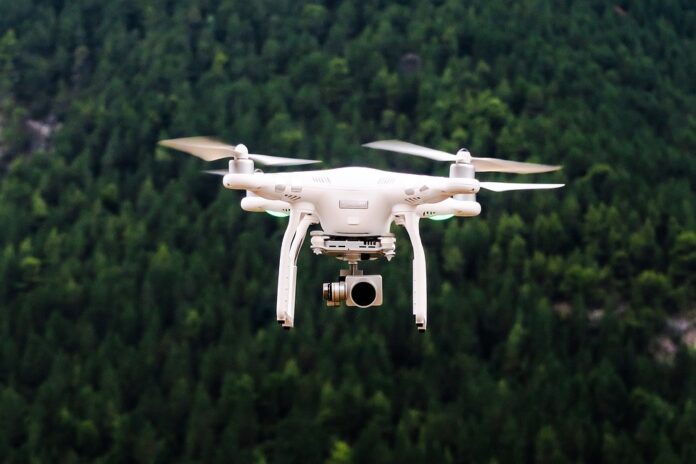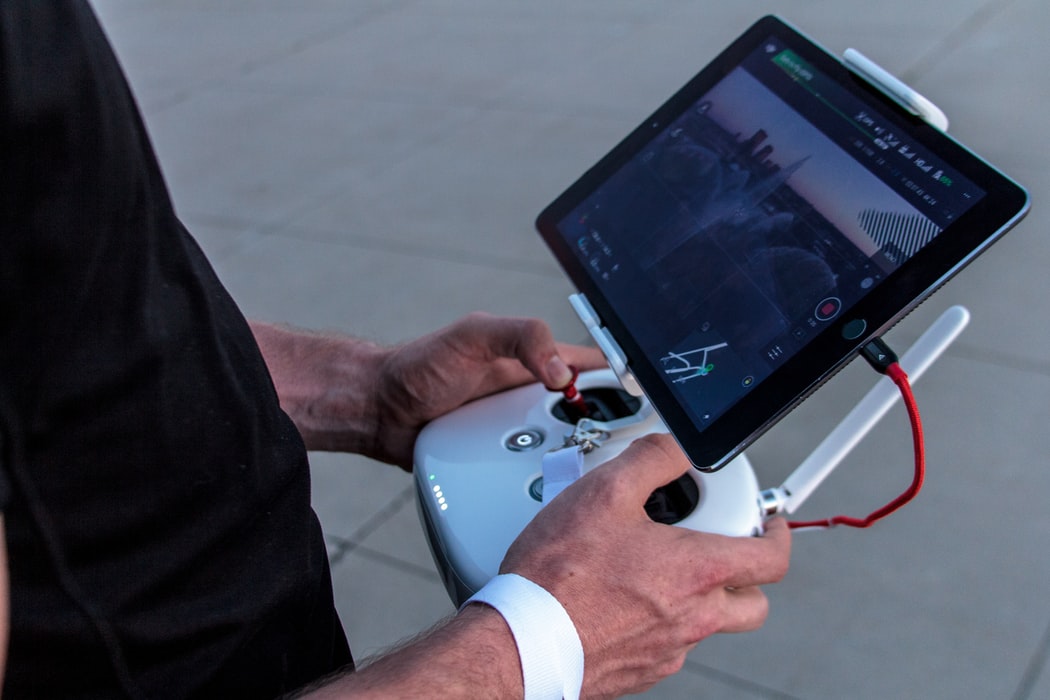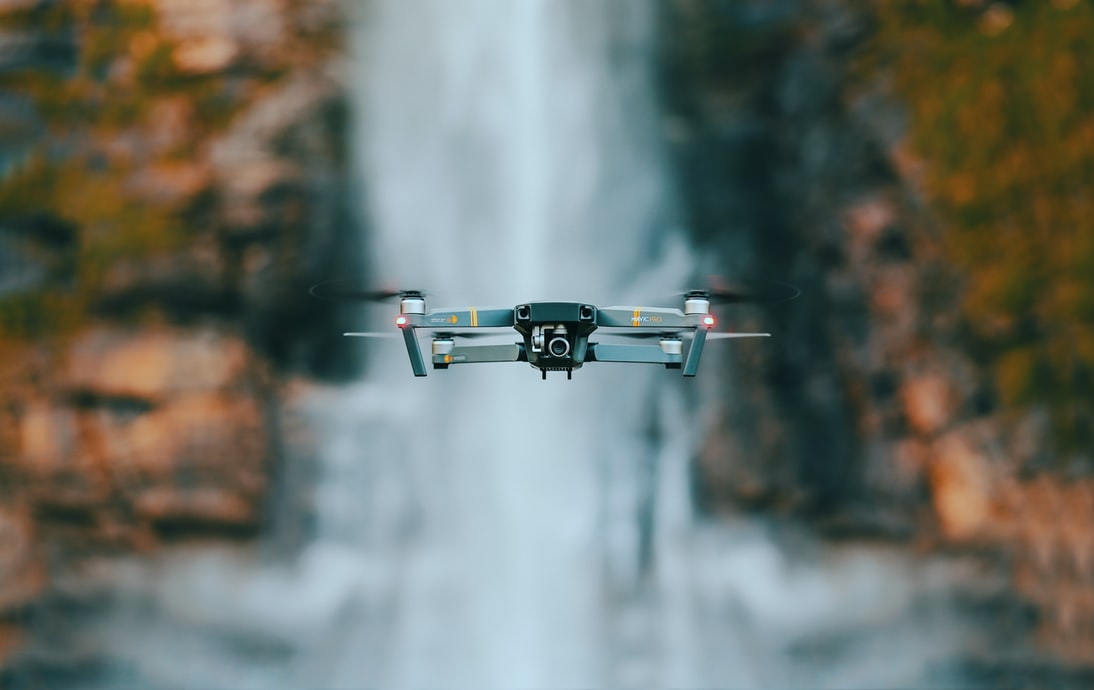
FPV (First Person View) cameras are compact, lightweight, and economical apparatus mounted on a drone. This camera transmits a video signal to the observation station; the quality of transmission and lenses influence the live video streams. The camera allows you to observe where the drone is flying and its field of view.
The camera’s video transmission is received on the remote control monitor, laptop, smartphones, or FPV goggles. Through an FPV drone goggle, you can have the best flying experience. Most manufactures have their drone glasses, which are adjustable and very comfortable.
While selecting an apt FPV camera, consider the following factors:

Lens size
The focal length of a lens is mostly stated in millimeters; a lower focal length means a broader view. A drone camera comes from 10mm to 120mm focal length. Long focal length cameras are ideal for visual inspection, though the resolution is low. High resolution, 35mm equivalent focal length, useful sensors is vital for drone inspection.
These lenses provide a detailed view and generate superior 3D models and point clouds. Camera articulation is another critical aspect while choosing a drone camera. If you prefer to inspect objects like an overpass or bridge from underneath, fully articulated cameras come in handy.
Latency and WDR
Using an HD camera will provide sufficient live video feed, but the drawback is latency. You will watch the frame before it gets recorded with a typical latency of 100 to 200ms (milliseconds), barely noticeable. But this latency difference counts in FPV racing drones. With an average flying speed of 50mph, a 100ms delay means the drone will fly six feet before you receive the signal. Subsequently, you can miss or hit the object hampering the drone. A dedicated FPV camera with less than 40ms is idyllic.
WDR (Wide Dynamic Range) technology improves light management and resolution of the camera. When a frame of an image is too dark and the other part bright, you cannot see the details. The camera incorporated with WDR technology rectifies this issue to provide a clear, balanced image. Regular cameras only record the middle part of the over and underexposed frame, while cameras with WDR technology and advanced sensors record both bright and dark regions in detail.

IR blocked or IR sensitive?
IR block cameras are ideal for daylight drone inspection, as it provides more vivid, detailed, and realistic picture. But this type of camera ineffective in dim light conditions. Cameras with IR sensitive lenses are operative both in the daytime and low light condition, though the resolution is lower than IR blocked cameras. IR sensitive cameras are suitable for both day and night use with a slight compromise with color tone and resolution, hardly noticeable.
Field of View
Most FPV cameras specify focal length in mm but do not denote the field of view. The human eye has a focal length of 2.97 mm; a 1.2mm lens provides a 185-degree field of view, and a 6.0mm lens gives a 78-degree field of view. For drone application lens with the broader field of view is better, as it provides a more expansive panorama.
A wider view lens can distort the image, but a modern drone camera nullifies the barrel fisheye effect. Some people prefer a narrow field of view, while others opt for a broader version, try both types and choose which suits your need. For racing drones, 2.9mm is a bit small; 2.5 mm (147 degrees) or 2.1mm (158degree) is optimal.

Image sensors
FPV cameras use either CMOS (metal oxide semiconductor) or CCD (charged coupled device) sensors. CCD sensor offers better resolution and expensive, but the improved resolution with a stiff price is not justified for drone application. CMOS sensors are cheaper than CCD sensors but good enough for FPV applications.
Cost is a crucial factor, as veteran FPV pilots sometimes crash their FPV racing drones. As the camera is often mounted in front of the drone, it suffers the most impact during a crash. Modern FPV racing drones build a shield over the camera to minimize the shock. A CMOS camera is lighter weight and consumes less power than CCD, making a difference in micro drones.
Image captured by CCD cameras are more comprehensive as it use a global shutter. A snapshot taken by a CMOS camera has a rolling effect as the frame is depicted pixel by pixel. CCD cameras redress the unwanted jello effect caused by the vibration of the drone. CCD cameras with a better dynamic range take a detailed picture in both bright and low light conditions. You will find a wide range of FPV cameras for drones on Fpv frenzy.

FPV System
An FPV system is relatively straightforward; the drone’s video is transmitted to the remote monitor or FPV goggles. Inside the drone, a camera and video transmitter (VTX) are incorporated. An FPV goggle is a display device with an inbuilt video signal receiver. There are four major components in an FPV system; FPV camera, video transmitter, display monitor/ FPV goggles, and antenna. Image captured by the camera is sent to VTX, which transmits the signal through the antenna to VRX. Subsequently, the VRX feeds the video into display monitor or FPV goggles.
The FPV goggle experience is unbeatable, immersive as it provides a crystal clear image and is not affected by sunlight. Further, they are compact and easy to transport. Monitor for flying FPV is more cost-effective and allows you to sweep between LOS and FPV effortlessly. The monitor is more fitting for people wearing glasses, though some FPV goggles makers are offering a diopter lens, even catering to specific requirements. For a more immersive experience, an FPV goggle is recommended over a monitor.
Fresnel Zone
For an optimal signal, the VTX and VRX antenna must be in alignment throughout the flying session. When the drone flies behind a tree or hill, the signal weakens or blackouts as you are outside the Fresnel zone. During this period, the video signal becomes static or fades on the display device. This problem aggravates with higher frequency transmission. 2.4 GHz radio signals have a more extended range than 5.8 GHz video signals to even out this issue.
















